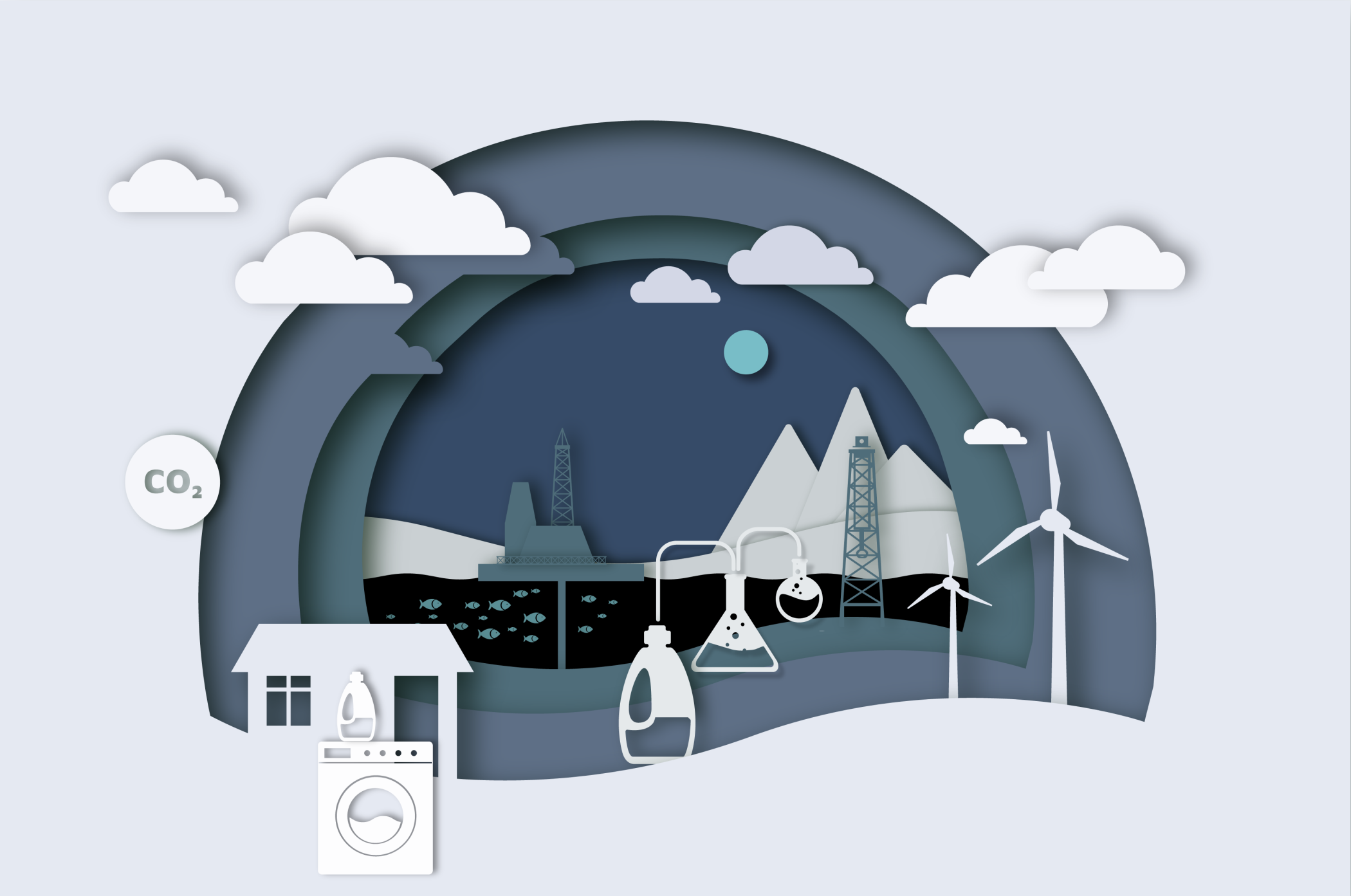Oxford University and Unilever report identifies actions needed to put cleaning and laundry products on net zero pathway

An interdisciplinary team from the Smith School of Enterprise and the Environment and the Oxford Department of Chemistry, in partnership with Unilever, have launched a new report identifying the policy interventions needed to address the carbon emissions of everyday cleaning, laundry and home care products.
The report, Cleaning up Cleaning: Policy and stakeholder interventions to put household formulations on a pathway to net zero, highlights the ‘hidden’ emissions of cleaning products and calls for national strategies for sustainable bio-carbon feedstock (raw material used for processing or manufacturing) to open up a pathway to net zero for these products.
Fossil-based carbon is found in product formulations such as laundry powder and liquid detergent, dishwashing detergent, and bars. It is used to make the cleaning and foaming ingredients known as surfactants, which can make up a significant proportion of the carbon present in everyday household products.
The overarching recommendation is to increase the use of sustainable carbon as feedstock to address the little-known fact that when a laundry cycle in a washing machine is complete, the detergent that goes down the drain degrades, and greenhouse gas (GHG) emissions are emitted into the atmosphere. For Unilever’s Home Care business, for example, its calculations show that this represents around 20 per cent of its GHG footprint.
A key way to eliminate these emissions is to shift to renewable, bio-based carbon feedstocks for the ingredients used in cleaning products. While this is technically feasible and provides the same performance for consumers, it is still an emerging industry and supply of ingredients needs to increase and costs need to come down before it can become a viable option across the fast-moving consumer goods (FMCG) sector, say the authors.
The report calls for policymakers to work with stakeholders from across industry, civil society, the financial community, researchers, and consumers, to create national strategies to increase the use of sustainable carbon as feedstock for these products.
Cameron Hepburn, Director of the Smith School and Battcock Professor of Environmental Economics, University of Oxford, said:
Our report highlights that national strategies for sustainable carbon feedstocks are vital to reduce the hidden emissions associated with everyday cleaning products. These should be cross-sectoral to account for other sectors using bio-based feedstocks – such as aviation – and include a portfolio of policy interventions to narrow the cost differential between bio and fossil-based carbon feedstocks,
This, alongside the removal of other barriers, will open up a pathway to achieving net zero for the vast amount of cleaning products that use carbon in their composition.
Overall, nearly 60 per cent of Unilever’s GHG emissions within the scope of its net zero target come from the raw materials and ingredients it buys. These scope 3 emissions occur both in the production and use (degradation) of the ingredients. Finding alternatives to fossil fuel-based chemicals is going to be Unilever’s biggest challenge in reaching net zero by 2039, says the company.
To achieve net zero emissions across its value chain by 2039, Unilever is working with supplier partners to radically reduce GHG impact of its scope 3 emissions. The latest example of this is within its India business, Hindustan Unilever (HUL), which is collaborating with leading chemical companies Tuticorin Alkali Chemicals & Fertilizers Ltd (TFL) and OCI to pilot the production of near zero emissions synthetic soda ash – a key ingredient in laundry powder.
Rebecca Marmot, Chief Sustainability Officer at Unilever, said:
We are fully committed to achieving net zero, which means we need to continue to address our scope 3 emissions. But in order to do this we need our supply chain to accelerate its shift to ingredients with renewable feedstocks.
Addressing scope 3, or supply chain GHG emissions, is a challenge the entire industry is facing. But by working together, we can accelerate progress and find solutions that benefit consumers and industry, yet still deliver the GHG emission reduction that is needed.



